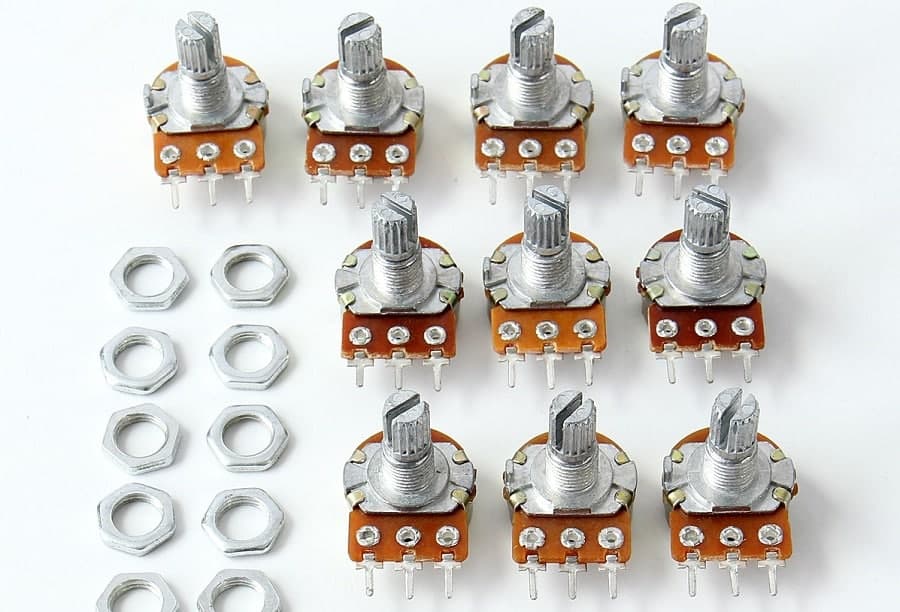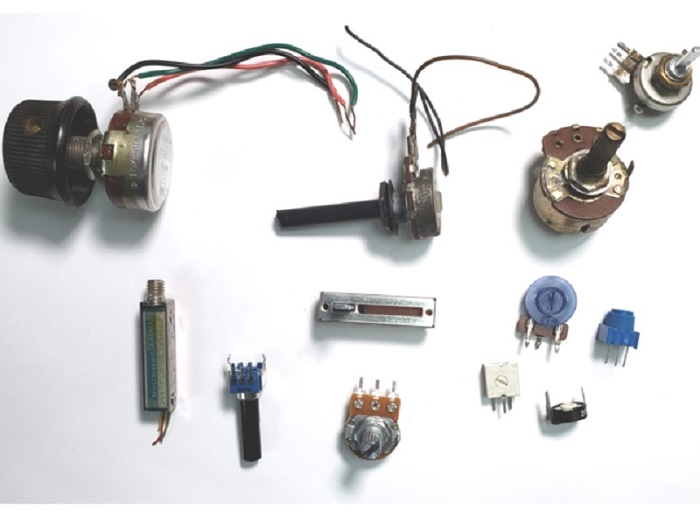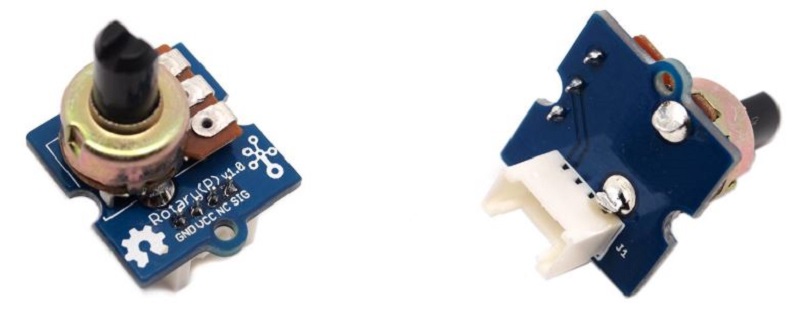Different types of potentiometers are used in our day to day life from the radio we listen to in the mornings to the television we watch at nights. These small but useful pieces can be used for comparing purposes, adjustments, and so on. In this article from Linquip, we want to talk about different POT types and each potentiometer application. Continue reading to know all about them.
Linquip is a platform that offers all kinds of information you need about potentiometers. Whenever you are in need of any type of potentiometer, you can be sure that Linquip’s team of experts can provide you with helpful and professional guidance. To get started, check out Linquip’s article “What is Electrical?“.
Are you familiar with potentiometers, and have you ever used them before? You’ll find a wide range of Electrical Products on Linquip that can assist you in finding the device that will meet your needs on Linquip. Are you trying to find a specific type of potentiometer that suits your needs? The Electrical Products for Sale are available on Linquip, all at no cost for you to access. By using Linquip, you will be able to send an inquiry/request for quotes to all of the available Electrical Suppliers and Companies without needing to pay any fees.
From digital pot to rotary pot to linear pot, each and all these potentiometers have been designed for specific purposes. But before we get into the details, let’s quickly review what a potentiometer is.
What is a Potentiometer?
Potentiometer (also known as POT) is a variable resistor that contains three terminals. This resistor has an adjustable voltage that you can manually change to control the electric current flow. It is all controlled with respect to Ohms Law. The potentiometer symbol is a rectangle or zigzag line that is placed between two linear lines. The most famous potentiometer application is in audio systems for changing the volume or other characteristics of audio signals.
Pots are made of resistive materials. They are made of carbon composition, conductive plastic, cermet, and metal film.
Different Types of Potentiometers
There are three main categories that potentiometers are classified into Linear Potentiometer, Rotary Potentiometer, and Digital Potentiometer. Each of them has been tailored for specific needs. But rotary POTs are the most commonly used potentiometer type.
-
Rotary Potentiometer
This POT type is designed to deliver adjustable supply voltage to the circuits. Rotary potentiometers have been designed in a way that its rotary motion will be converted into varying resistance. Just like other common potentiometers, the rotary pot contains three terminals, two of them have uniform resistance and the middle terminal is connected to the resistance via a wiper (also known as sliding contact). This wiper is connected to a rotating knob for adjustment purposes. Movement of the knob will set the sliding contact in motion across the resistance. The result would be changing in the resistance of the POT.
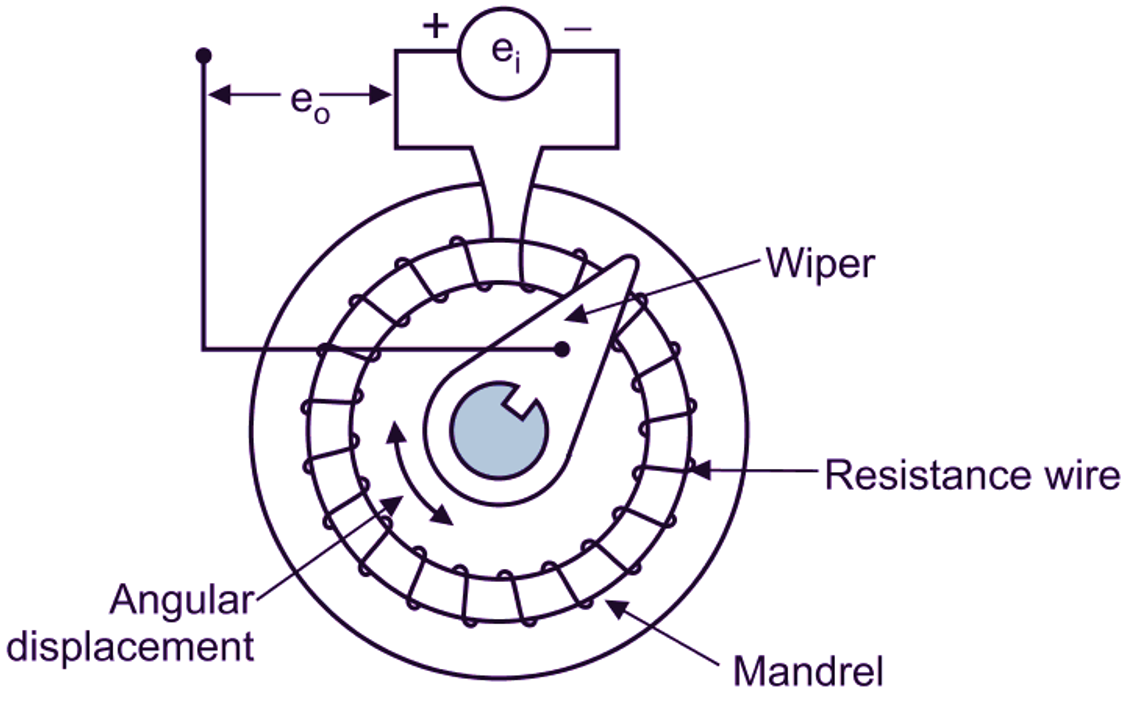
Rotary potentiometers have different types themselves such as single-turn pot, multi-turn pot, concentric pot, dual-gang pot, and servo pot.
As we already discussed, the volume controller in audio systems use a rotary potentiometer and the rotating knob will help you adjust the volume.
-
Linear Potentiometer
Another item in different types of potentiometers is linear POT. This potentiometer is similar in function to the rotary potentiometer. The only difference between these two, as the name suggests, is the linear motion of the knob, instead of rotary, for adjusting the resistance. A sliding contact and a linear resistor in this pot type will help to adjust the resistance for the desired outcome. Just like other potentiometers, linear pots have three terminals, the two outer ones are connected to the input voltage or the source. The sliding contact and one of the linear resistor’s end will help with the produced output.
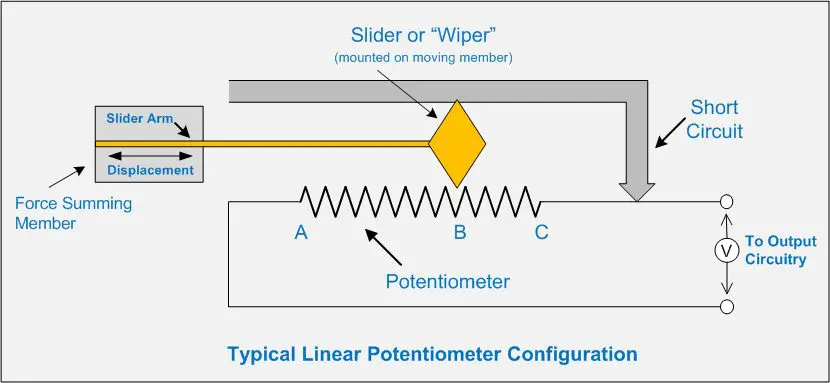
Linear pots have different types too, such as motorized fader, multi-turn slide, slide pot, and dual-slide pot.
These pots are great for comparing a standard cell with a battery cell, measuring a circuit’s branch voltage, and also measuring a battery cell’s internal resistance.
There are many disadvantages that came with mechanical potentiometers (linear pots and rotary pots). Accuracy variations, their size, mechanical wear, humidity, resistance drift, sensitivity to vibration, wiper contamination, and lots of other parameters are among these disadvantages. That leads us to the next potentiometer type: Digital Potentiometer.
-
Digital Potentiometer
As the demand for rotary and linear potentiometers has increased in the market, designers found a gap in the accuracy variations in these two potentiometer type. That’s why side by side of these mechanical potentiometers, they designed digital potentiometers (also called Digi POT or Digital POT). They are well-known for their accurate measurement compared to the two former types. The environmental or mechanical issues that are mentioned above, won’t affect digital pots. They have been designed in a way that all these parameters can’t change the outcome of the pot.
Digital potentiometers are different from other types of potentiometer in construction. This resistive digital to analog converter is controlled digitally (unlike linear and rotary that were manually controlled). It mimics the potentiometer’s analog functions to provide the desired outcome.

Digi pots are commonly used for scaling and trimming analog signals by micro-controllers. They are popular for their accuracy, reliability, low power dissipation, negligible resistance drift, etc.
Potentiometer’s Value
You can usually find the pot’s value on top of the unit. They can be either in the form of marking codes or the exact value. For example, you may see 100K on top of your potentiometer which means that your potentiometer’s value is 100KΩ. But sometimes the company uses a three-digit code. If you see a three-digit code on top of the pot, the first two digits are the value you are looking for that should be multiplied by the last digit.
The last digit shows the multiplier of the potentiometer. Let’s say the number on top of your potentiometer is 103. The first two digits are 10, which should be read as 10Ω, then, to calculate the real value of the potentiometer, you should check the last digit (in this case, 3) that should be considered as 10 to the power 3. Now, multiply 10 to the power three to 10. The result is 10 kΩ which is the real value of your potentiometer.
These were all different types of potentiometers and their application. Now you know what a potentiometer is, what are the most popular types of potentiometers, and what are their most popular application. Which one do you think you use more often? Comment below and share your thoughts with us. You can also sign up on Linquip to ask our experts about potentiometers and gain even more knowledge about them.
Download Types of Potentiometer PDF
We have provided you with a PDF version of this document. Click on the following link to start downloading.
Buy Equipment or Ask for a Service
By using Linquip RFQ Service, you can expect to receive quotations from various suppliers across multiple industries and regions.
Click Here to Request a Quotation From Suppliers and Service Providers
Read More on Linquip
- Types of Electric Circuits: All Classification with Application
- Difference Between Potentiometer and Voltmeter
- Ultimate Guide: What Is Linear Potentiometer
- What is Rotary Potentiometer? What It Does for Us
- What Is a Digital Potentiometer? An Explanation on the Working Principle and Advantages
- Potentiometer Connection, Working, Circuit Diagram, & Wiring Guide
- What is the Difference Between Potentiometer and Rheostat?
- What is Potentiometer ? The Ultimate Guide to Knowing Potentiometers And Their Construction
- 13 Types of Tachometers With Their Functions & Advantages

